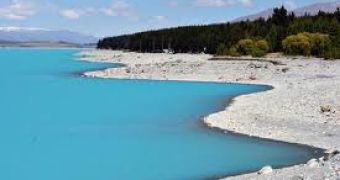A new report issued by researchers working with the Center for Biological Diversity says that climate-change driven sea level rise threatens the long-term survival of 233 plant and animal species that are already considered endangered.
Extreme weather manifestations brought about by climate change and global warming also threaten to bring these species closer to extinction.
Presently, the US is home to about 1,500 federally protected species. Hence, the fact that 233 of them risk going extinct in the not-so-distant future due to an increase in global sea levels should not be taken lightly.
According to EcoWatch, the species the Center for Biological Diversity researchers are worried about are spread across 23 coastal states.
These states are as follows: Alabama, Alaska, California, Connecticut, Delaware, Florida, Georgia, Hawaii, Louisiana, Maine, Maryland, Massachusetts, Mississippi, New Hampshire, New Jersey, New York, North Carolina, Oregon, Rhode Island, South Carolina, Texas, Virginia and Washington.
In the report, it is said that both rising sea levels and storm surges are likely to destroy their natural habitats and their nesting areas, thus causing their population to plummet.
The Key deer, the Loggerhead sea turtle, the Delmarva Peninsula fox squirrel, the Western snowy plover and the Hawaiian monk seal are the species most at risk.
Despite the fact that these 233 species in coastal states all benefit from legal protection, the specialists now arguing that sea level rise is likely to push them to extinction say that wildlife protection agencies in the country are not doing enough to safeguard them.
“From Florida’s key deer to Hawaii’s monk seals, some of our most amazing creatures could be doomed as the oceans swallow up their last habitat and nesting sites. If we don’t move fast to cut carbon pollution and protect ecosystems, climate chaos could do tremendous damage to our web of life,” says Dr. Shaye Wolf, the Center’s climate science director.
“Federal wildlife officials have to step up efforts to protect America’s endangered species from the deadly threat of rising seas,” he goes on to argue.

 14 DAY TRIAL //
14 DAY TRIAL //